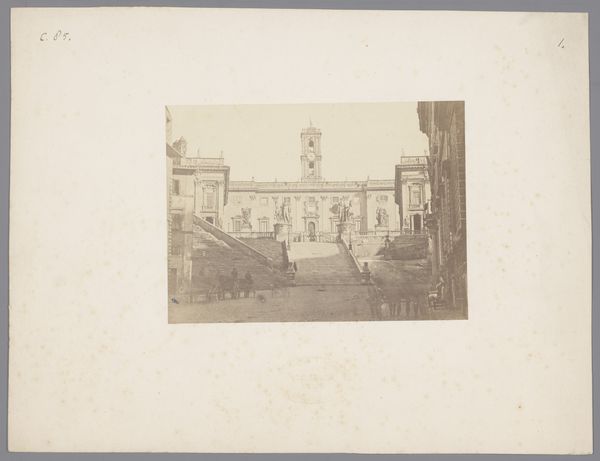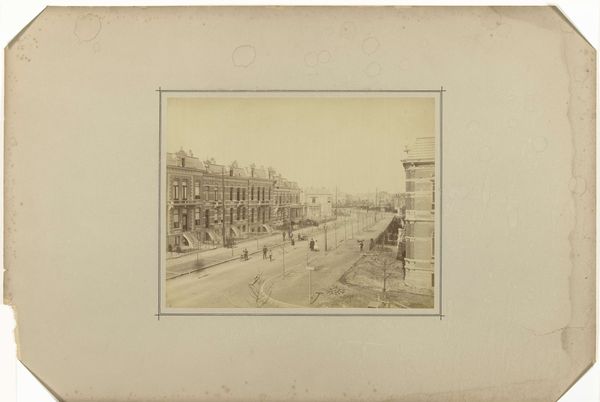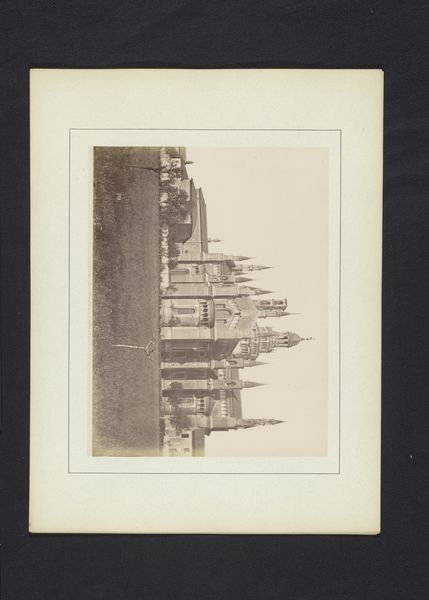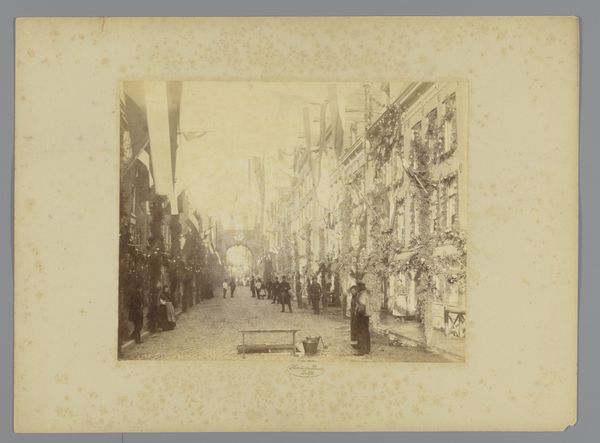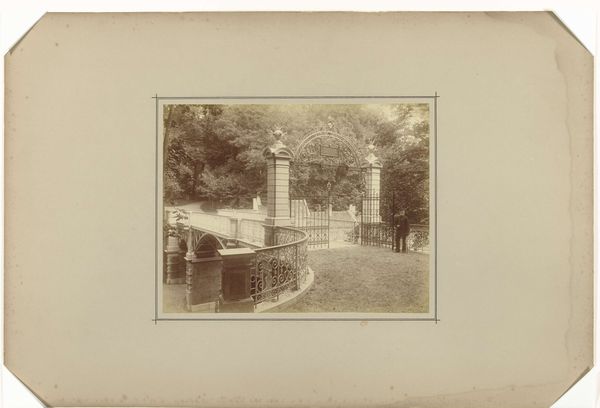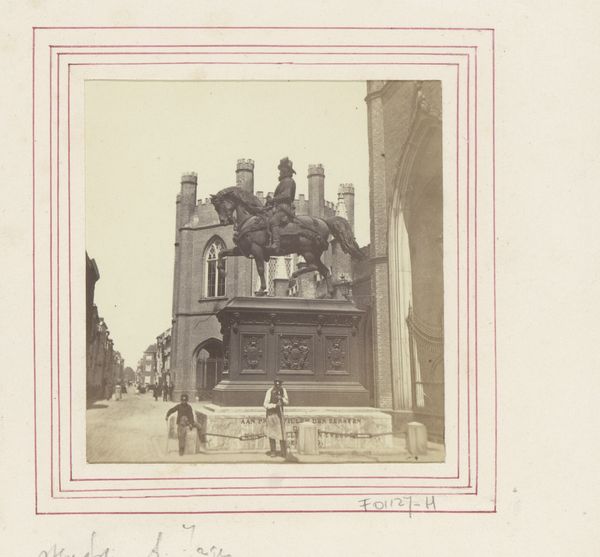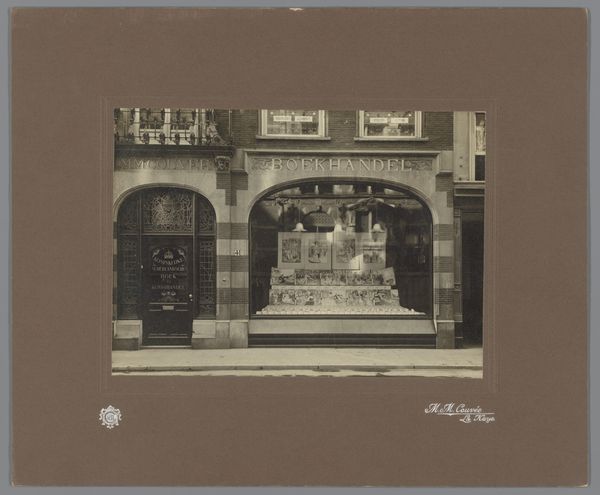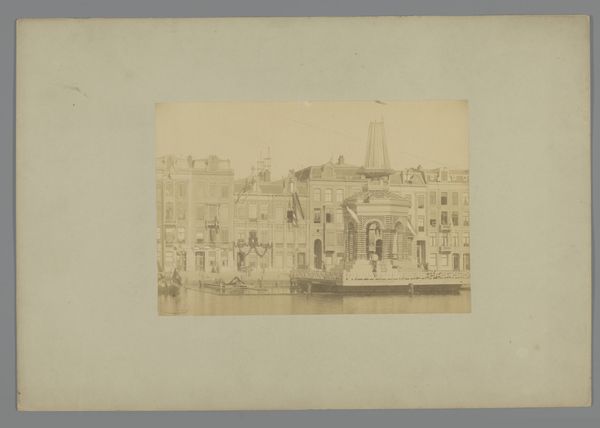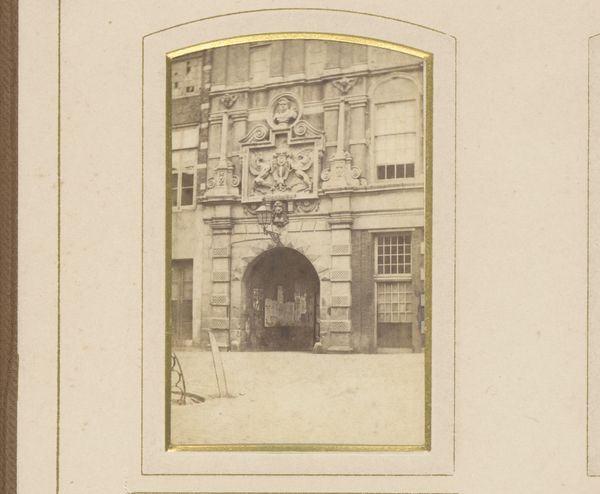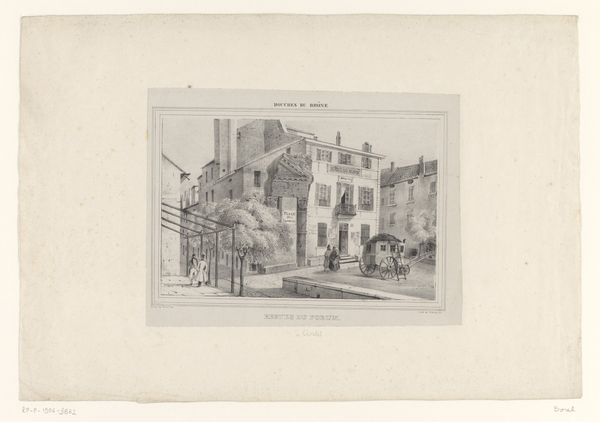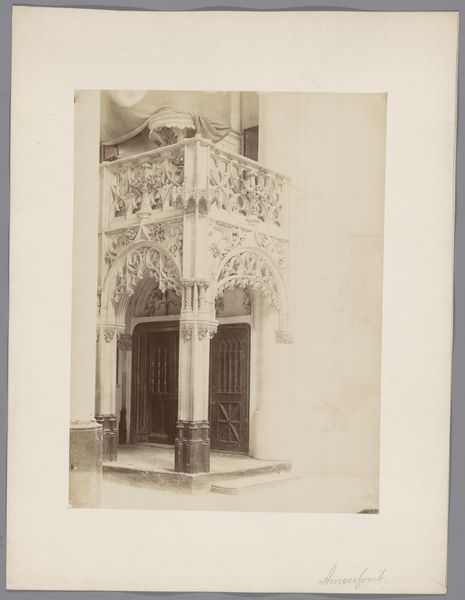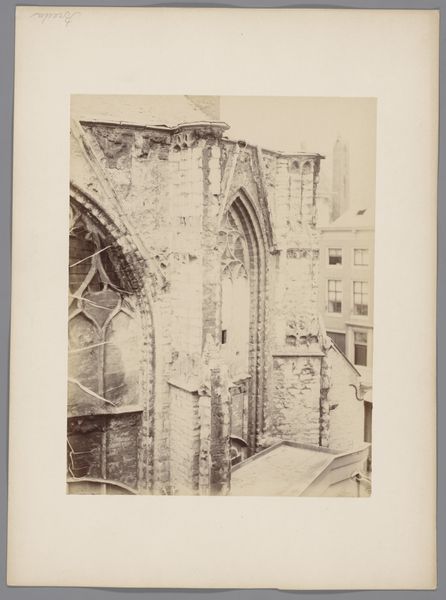
Klooster Mariënburg van de Ursulinen (of Hallo) Zusters aan de Duivengas te Nijmegen c. 1885 - 1890
0:00
0:00
photography, gelatin-silver-print
#
photography
#
gelatin-silver-print
#
19th century
#
cityscape
Dimensions: height 220 mm, width 271 mm
Copyright: Rijks Museum: Open Domain
This photograph of the Klooster Mariënburg in Nijmegen was taken by Wilhelm Ivens, sometime in the late nineteenth century. The sepia tones are a direct result of the albumen printing process used at the time, which involved coating paper with egg whites and silver nitrate. The choice of photography as a medium is fascinating, as it intersects with the rise of industrialization. Photography allowed for the mass production of images, making visual documentation more accessible than ever before. Ivens' work captures a moment in time, but also hints at the broader social changes of the era, like urbanization and the changing role of religious institutions. The level of detail achieved through the albumen process allows us to appreciate the architecture and urban landscape with a unique clarity. By considering the materials and processes involved, we gain a deeper appreciation for the artistic and cultural significance of this photograph.
Comments
No comments
Be the first to comment and join the conversation on the ultimate creative platform.
